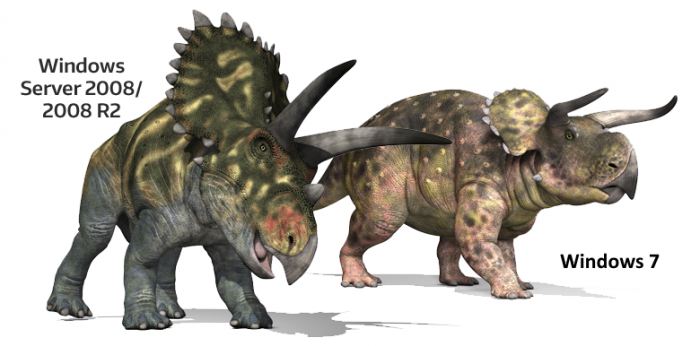On January 14, 2020, support for Windows Server 2008 and 2008 R2 will end. That means the end of regular security updates. Don’t let your infrastructure and applications go unprotected. We’re here to help you migrate to current versions for greater security, performance and innovation.
What does this mean for you and your business?
Once Microsoft stop supplying updates for both these Windows systems, they will quickly become out of date.
Any further software updates to your software programs you rely on day to day to run your business may cease. This can cause a lack of security, functionality and worst of all, productivity in the applications you use.
Importantly, software vendors may also stop supporting Windows 7 and Server 2008 R2 and only support newer operating systems. Therefore, the software that runs on older systems will no longer receive updates and newer versions will not be install-able. We have seen several software vendors drop support for Server 2008 R2 already.
What can you do to prepare for the end of Windows 7?
In most cases, Windows 7 machines can be simply upgraded to Windows 10 without an issue. Sometimes newer hardware may be required where the machine is simply too old to run modern applications. We recommend a life-cycle of 3-5 years for business use computers to coincide with the warranty and depending on usage.
What can you do to prepare for the end of Windows Server 2008 R2?
Hardware running Windows Server 2008 or Windows Server 2008 R2 has more than likely reached its recommended end of life (maximum of 7 years). Beyond that, we tend to see hardware failures and security vulnerabilities much more frequently.
What can you do to prepare for the end of Small Business Server 2011?
SBS Server was a very popular solution as it provided a very low cost licensing model for Email, Database & Sharepoint services all in one. As technology changed and virtualisation became the new normal, SBS servers became considered quite a burden as they often are attributed to complete loss of productivity when a single service goes down. In addition, they were quite slow at recovering if you had to go from ‘bare metal’. You can begin to look at what the SBS server is doing and how to divvy up the workload for better load sharing and redundancy.
What do we recommend?
We highly recommended replacing current server hardware if you are running Windows Server 2008, with a modern system which is more suited to a modern server operating system Microsoft Server 2016 or Microsoft Server 2019 on hardware that is under warranty.
The most cost effective way to manage business email in 2019 is to have your email hosted by Office365, this offers greater redundancy along with scaled costs to match your business size.
If you are running Windows 7, we highly recommend that you upgrade to Windows 10, to ensure that you receive all the security updates that you should.
Migration to a newer server system should be done alongside your current system. It should be ‘cut over’ when the new system has been fully tested and proved to meet your business requirements.
If you would like assistance with the move form Windows Server 2008 or Windows 7, please don’t hesitate contacting us.
